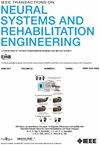Continuous Estimation of Hand Kinematics From Electromyographic Signals Based on Power-and Time-Efficient Transformer Deep Learning Network
IF 4.8
2区 医学
Q2 ENGINEERING, BIOMEDICAL
IEEE Transactions on Neural Systems and Rehabilitation Engineering
Pub Date : 2024-12-11
DOI:10.1109/TNSRE.2024.3514938
引用次数: 0
Abstract
Surface Electromyographic (sEMG) signals contain motor-related information and therefore can be used for human-machine interaction (HMI). Deep learning plays an important role in extracting motor-related information from sEMG signals. However, most studies prioritize model accuracy without sufficient consideration of model efficiency, including the model size, power consumption, and the computational speed of the model. This leads to impractical power consumption, heat dissipation levels and processing time in wearable computation scenarios. Here, we propose an efficient Transformer method that employs the EMSA (Efficient Multiple Self-Attention) and pruning mechanism to improve efficiency and accuracy concurrently, when estimating finger joint angles from sEMG signals. The proposed method does not only achieve state-of-the-art accuracy but can also be deployed on wearable devices to satisfy real-time applications. We applied the proposed model on the Ninapro DB2-dataset to estimate finger joint angles during grasping tasks. RNN series models, Convolution series models, and Transformer series models were used as reference models for comparison. In addition to common model accuracy, the deployment performance of the models was tested on microprocessors, such as Intel CPU i5, Apple M1, and Raspberry Pi 4B. When tested on 38 subjects of the Ninapro DB2, the proposed model resulted in a correlation coefficient of求助全文
约1分钟内获得全文
求助全文
来源期刊
CiteScore
8.60
自引率
8.20%
发文量
479
审稿时长
6-12 weeks
期刊介绍:
Rehabilitative and neural aspects of biomedical engineering, including functional electrical stimulation, acoustic dynamics, human performance measurement and analysis, nerve stimulation, electromyography, motor control and stimulation; and hardware and software applications for rehabilitation engineering and assistive devices.

 求助内容:
求助内容: 应助结果提醒方式:
应助结果提醒方式:


